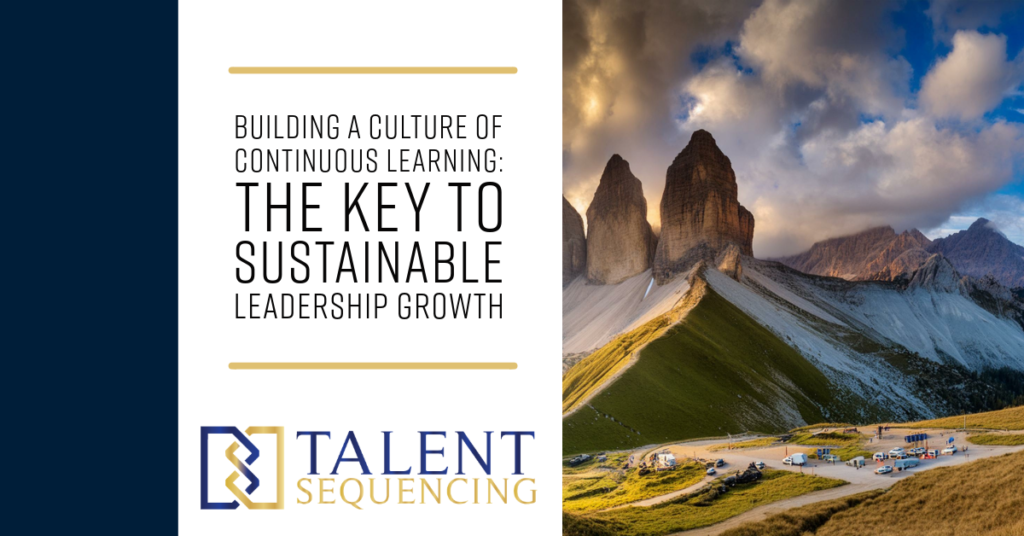
In our previous post, we explored the evolution of leadership development and why the one-size-fits-all approach no longer works. Today, we’re diving deeper into what makes leadership development sustainable over time: a culture of continuous learning. In the most effective organizations, leadership growth isn’t a series of isolated events or one-off training programs—it’s woven into the daily fabric of the organization. When leaders are given consistent opportunities to learn and adapt, they become better equipped to handle the complexities of today’s fast-paced business environment.
At the heart of a continuous learning culture is the understanding that leadership development should be a constant, evolving process. Leaders at all levels need ongoing opportunities to sharpen their skills, learn new ones, and reflect on their progress. But this doesn’t just happen through formal training programs. While structured learning experiences are essential, organizations must also capitalize on small, everyday moments that offer valuable learning opportunities. From mentorship sessions and peer feedback to collaborative projects and problem-solving exercises, these moments are key to reinforcing leadership development on a daily basis.
The true power of integrating continuous learning into the regular routine of leadership development lies in its adaptability. Every leader is different, and every team faces unique challenges. Programmatic Learning for Leadership supports this by providing a framework that adapts to the needs of each leader and organization. By encouraging leaders to engage in both large, structured learning programs and small, in-the-moment growth opportunities, organizations can create a leadership team that is agile, resilient, and always improving. It’s this balance between formal and informal learning that creates a truly dynamic environment for growth.
Moreover, fostering a learning culture ensures that leadership development is not just reactive but proactive. Instead of waiting for performance issues to arise, organizations can cultivate an environment where leaders are always in a state of self-improvement, preparing them for future challenges. Small, consistent learning opportunities—like peer coaching or regular feedback loops—complement larger initiatives like leadership workshops or advanced training programs. Together, they create a layered approach to development that’s constantly evolving to meet the demands of both the individual leader and the organization as a whole.
In conclusion, building a culture of continuous learning is one of the most effective ways to sustain leadership growth and success. By embedding both formal and informal learning opportunities into the everyday routine of leadership development, organizations can foster an environment where growth is ongoing, adaptable, and aligned with long-term goals. With programmatic learning, this process becomes even more effective, creating leadership teams that are not only capable but also always evolving, driving organizational success for years to come.
